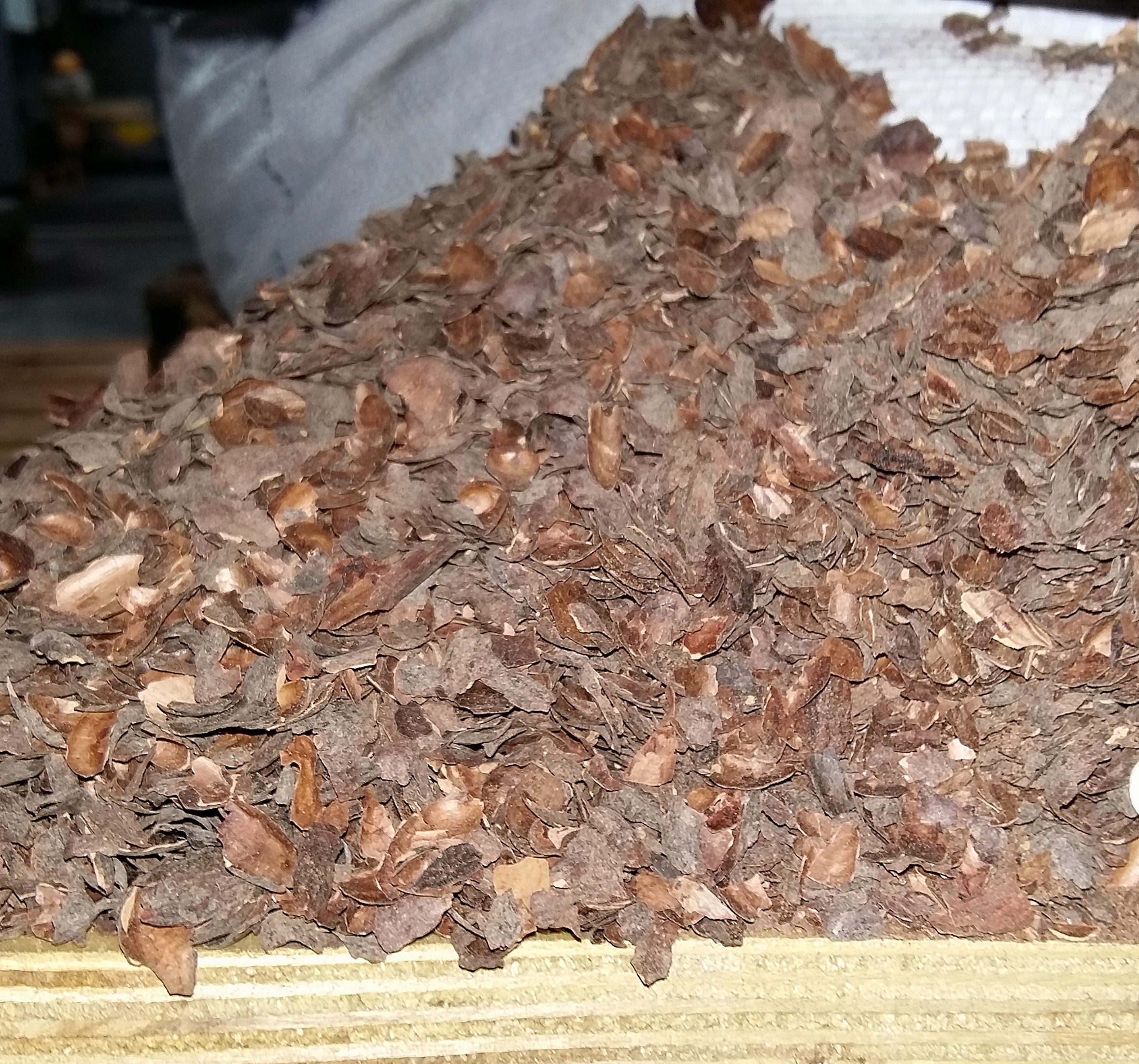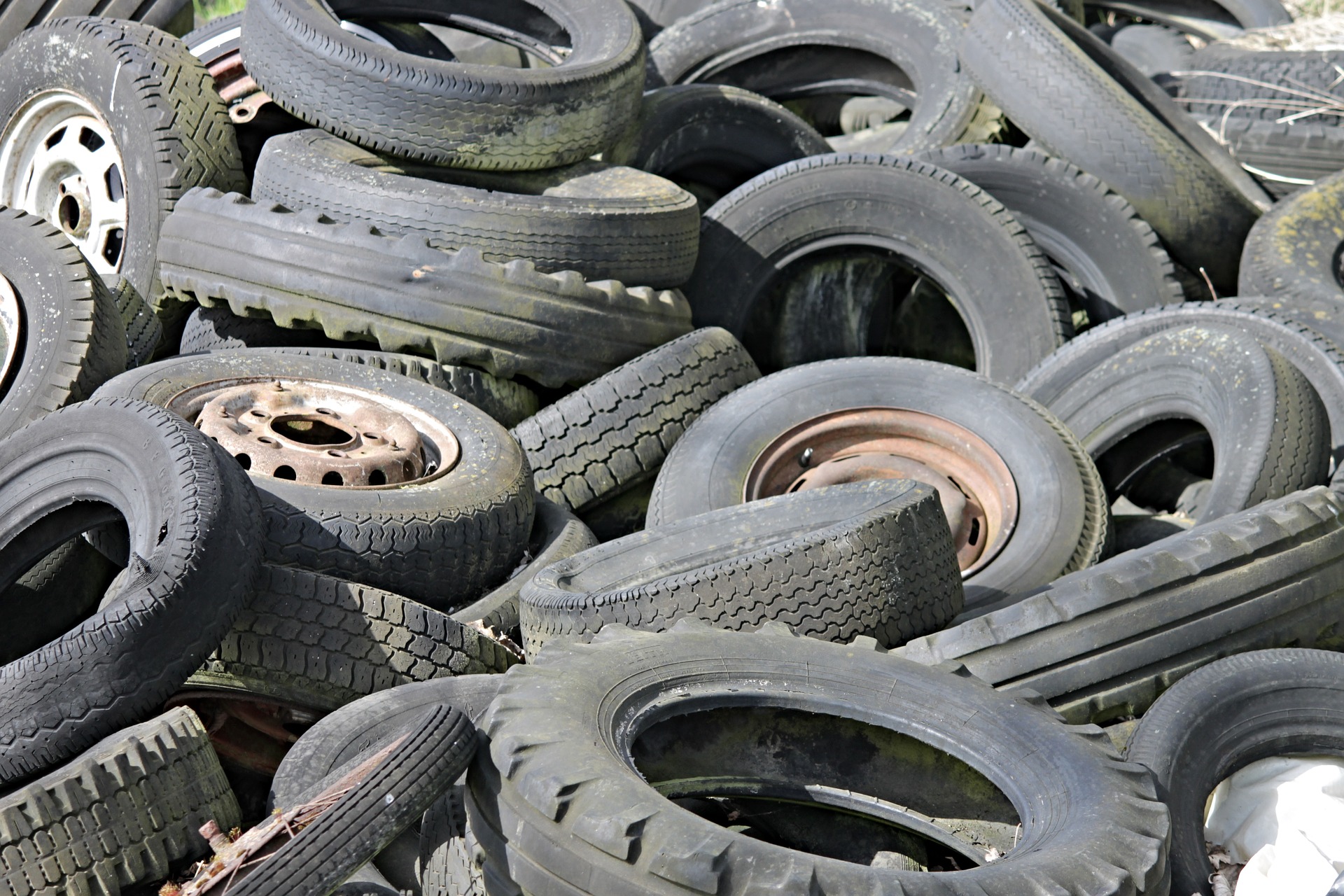Pyrolysis is a thermochemical decomposition of organic material at high temperature and in the absence of oxygen or in an inert gas atmosphere. In comparison to incineration, pyrolysis has a lower process temperature and lower emission of air pollution, so the technology is suitable for the management of many different types of waste. The EL PIRO test installations are currently operating municipal waste in the form of RDF and sewage sludge. However, the possibilities of application are definitely wider.
Fig. The input to the pyrolysis process conducted by Metal Expert – cocoa shells

Source: Own materials
Examples of wastes that can be management by pyrolysis in EL PIRO technology
- Biomass
Each kind of biomass potentially can be used as an energy source replacing conventional fossil fuels.
- Wood and garden waste
The biomass residues can be processed in order to recover their organic content in a useful form. The pyrolysis of wooden waste is a well-known and often used process, it can occur already at lower temperatures. During the pyrolysis process the hemicellulose breaks down first at temperatures of about 200–250oC, then cellulose decomposes in the temperature range of 240–350o C and finally lignin is pyrolysed at temperatures of about 280–500o C. In general, the pyrolysis of wood requires a temperature of at least 300–375oC.
- Food waste
The pyrolysis of selected food waste, such as fruit skins, potato skins, nut shells, coffee waste, has already been the subject of many successful studies around the world. In the literature, pyrolysis is mentioned as a method with the potential to process food waste, but the efficiency of the process is strongly dependent on the composition of the waste.
- Multi-material packaging waste
Packaging waste, often multi-material, is difficult to manage in the recycling process. Packaging that is made of compounds having carbon in the composition can be subjected to pyrolysis processes. An example of such waste can be disposable coffee cups and other beverages cups. Recycling paper cups could be potentially difficult because of their composition as a combination of paper and paraffin. A basic cup is typically made of 95 wt% of paper (cellulose wood pulp) and 5 wt% of polyethylene for coating, to improve its water resistivity and resistance to heat. The composition of this waste allows for pyrolysis processes to be carried out at temperatures of around 400 – 500oC.
As with single-use cups, Tetrapak type packaging waste is also suitable for pyrolysis process. The multi-layer polycoated paperboards are widely used as aseptic packages for beverages like milk or juice. This packaging system allows products once considered perishable to be distributed and stored without refrigeration for periods of up to six months or even more. The components in tetra pack are generally kraft paper (about 70%), low-density polyethylene (approximately 25%) and aluminum foil (remainder – about 5%). A conscientious consumer who wants to segregate waste will have a serious problem with the classification of such waste. Unfortunately, most of this type of waste goes to landfills. Ecological ways of tetrapack management can be the pyrolysis process, because it is the right method of treatment for both paper and plastics. In addition, aluminum can be removed relatively easily from the solid residue of the process. Currently, low-temperature pyrolysis is a more commonly used process to ensure good quality recovered aluminum.

Source: Pixabay
- Rubber
Rubber are elastomers (polymer plastics or natural) made of aliphatic polymer chains, which have been crosslinked to some degree in the vulcanization process. Due to the fact that they consist of carbon chains, they are perfectly suitable for use in pyrolysis processes.
- Used tires
Tires are waste made of rubber, which is often used in low temperature pyrolysis processes (whose main product is pyrolysis oil, the yield is about 38 – 56% by weight, and the heat of combustion can be up to 40 MJ/kg).
- Pyrolysis can use a variety of other rubber waste, for example rubber gloves. The research carried out by Walter Kamiński made it possible to obtain as much as 80.6% of oil, 18.2% of gas and 1.2% of biochar at a temperature not exceeding 600oC in the process of pyrolysis of rubber gloves.
- Textiles
UThe clothing and textile wastes are composed of synthetic materials such as acrylic, nylon and polyester fibres and natural materials such as wool, flax, leather, silk and cotton. Cotton is composed mainly of natural polymeric – cellulose. Thus, this material should behave like other biomass materials during pyrolysis. Frequently used natural fabrics such as linen, jute, coconut, manila are also made of cellulose. The most common polymeric fabrics used in the textile industry, including acrylic textile fabric, allow to obtain in the pyrolysis process large amounts of gas used to produce energy (over 60% of the gas content in the resulting products).
- Plastics (i.e. HDPE, LDPE, PET, PP, PS)
Non-recyclable plastics (for example, waste consisting of a mixture of different plastics) are a great challenge in terms of their ecological management. Since most plastics are not biodegradable, directing them to landfills is not a desirable solution from the point of view of environmental protection. Plastics that cannot be recovered by raw material recycling can be thermally processed. However, there is a lot of controversy regarding the combustion of these wastes, due to the release of toxic substances (e.g. dioxins and furans). To prevent these harmful processes, very high combustion temperatures can be used, but this requires huge amounts of energy, which is associated with high costs. Another disadvantage of traditional combustion is that it completely destroys all valuable organic matter.
The best solution for developing plastics that cannot be recycled is pyrolysis. This process allows for the transformation of plastic waste into valuable energy fuels, which, in addition to a positive environmental impact, is also economically viable.
Sources:
Potential of pyrolysis process in the waste management sector, D. Czajczyńska, L. Ghazal, R. Krzyżyńska, A.J. Reynolds, N. Spencer, H. Jouhara, Thermal Science and Engineering Progress, 2017
A comparative investigation into the formation behaviors of char liquids and gases during pyrolysis of pinewood and lignocellulosic components, Bioresource Technology, Xinhua Shi, Jie Wang, 2014
Pyrolysis of aseptic packages (tetrapak) in a laboratory screw type reactor and secondary thermal/catalytic tar decomposition, J.Haydary, D.SusaJ.Dudáš, 2013
Opportunities and barriers for producing high quality fuels from the pyrolysis of scrap tires, Idola Hita I in., 2015
Feedstock recycling of synthetic and natural rubber by pyrolysis in a fluidized bed, Walter Kaminsky, Carsten Mennerich, Zie Zhang, 2009
Activated carbons from acrylic textile waste, Mohamad Anas Nahil, Paul T. Williams, 2010
In addition to the most common types of waste listed above, pyrolysis can be subjected to all types of waste consisting of organic substances.
Metal Expert carried out a series of tests allowing to check the possibilities of managing various types of waste and production residues. The profitability of the pyrolysis process should be checked individually for each waste by preliminary testing of a waste sample. The yield of the products of the process depends on the process temperature as well as on the characteristics of the waste (humidity, chemical composition, etc.).
If you are interested in checking whether your waste is suitable for development in EL PIRO pyrolysis technology – please contact us CONTACT
